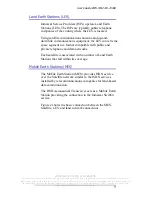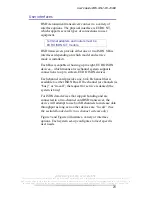
CONFIDENTIALITY STATEMENT
This document contains information that is private and Confidential, and is supplied on the express condition that it is not to be
used for any purpose other than the purpose for which it was issued, nor is it to be copied or communicated in whole or in part, to
any third party other than the recipient organization, without the prior written permission of EMS Technologies Canada, Ltd.
Copyright © EMS Technologies Canada, Ltd.
User’s Guide EMS-MN-1110-10048
21
ISDN data call requirements
The following equipment is required to make an ISDN
connection using a HSD Transceiver:
•
Computer
•
Euro ISDN terminal adapter with an RJ-45
connector (standard ISDN connector)
•
RJ-45 to RJ-45 cable (ISDN cable)
•
Details of your Internet Service Provider: ISDN
and International dial-up access, Dial-up number,
account name (User ID), and password
Another set-up option is to use a router
instead of a terminal adapter.
Figure 3 and Figure 4 illustrate system set-
up options.
Bonded calls (two-channel systems only)
Bonded calls are possible with HSD transceivers that have
two channel cards installed. Bonded calls utilize both 64 k
channels to provide a single 128 k data channel. The
terminal adapter or router places two separate calls to
combine the data transfer over both channels.
Although bonded calls provide a single 128 k channel, the
actual link capacity is application and protocol dependant.
Typical throughput on a Multilink PPP TCP/IP connection
is only 80 to 90 % of the link capacity (running Windows
2000).
The system can only make bonded calls if both channels are
available. If another device is using one of the B Channels,
then the data call proceeds—but as a single channel call.
If a bonded call is in progress, (using both B channels) the
system is busy and denies all other calls until a channel is
free.
















































